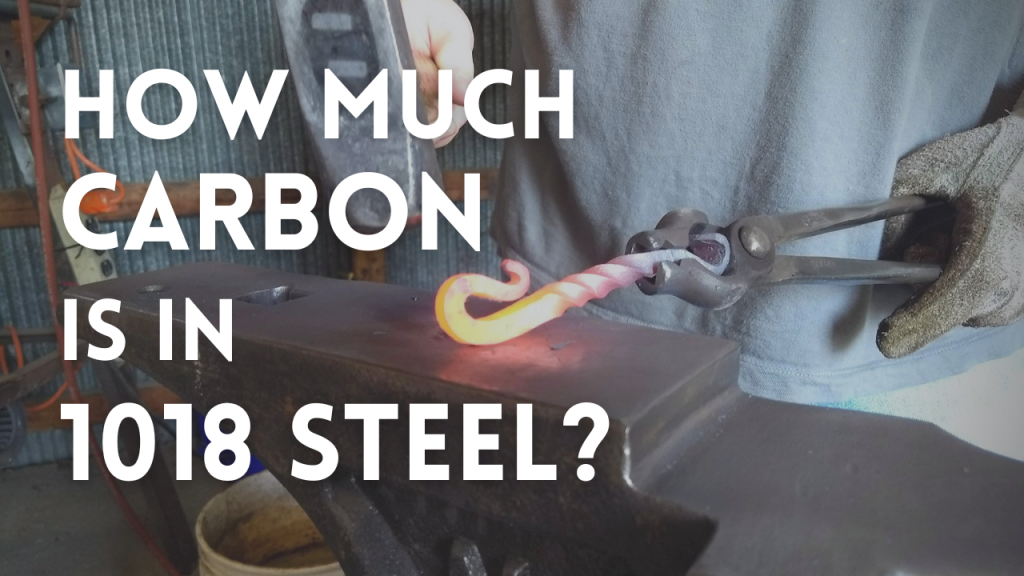
As blacksmiths we use 1018 carbon steel quite a bit.
It’s easily workable at high temperatures and maintains good strength in a variety of applications from home hardware to machining.
In this post, we’ll talk about exactly how much carbon is in 1018 steel.
How Much Carbon Is In 1018 Steel?
To find our answer, we take a look at the last two digits in the steel name: “18”.
That tells us that the carbon content averages to 0.18% with a range of 0.15 – 0.20%.
What does this mean for 1018 as a material?
The relatively low carbon content makes it a poor candidate for heat treating.
Generally, steels with less than 40 points or 0.40% of carbon won’t harden.
*Knives, axes, and other tools that require heat treating should start with steel at higher carbon concentrations.
However, 1018 has strength, ductility (more on this in a minute), and comparative ease of welding and machining.
This makes it great for many blacksmithing projects. If you’ve taken a class at Brown County Forge, you’ve used 1018 steel to make hooks, bottle openers, and other hardware.
What Else Is In 1018 Steel?
The composition of 1018 is roughly as follows in percentages:
- Carbon – 0.15 – 0.20
- Iron – 98.81 – 99.26
- Manganese – 0.60 – 0.90
- Phosphorous – 0.04
- Silicon – 0.05
The manganese strengthens the material. Iron is the base element that the other elements combine with to produce the steel alloy.
What is Ductility in Steel?
Ductility is the degree to which a material can sustain alteration of shape, form, or texture under tension/stress before failing.
In blacksmithing this means it has a great ability to hold up to hammering and heat.
It has a low risk of breakage. In general, the higher the carbon content the higher the risk of brittleness and breakage (in very simplified terms).
Where Can You Buy 1018 Carbon Steel?
Depending on where you live, your best option may be your local steel supplier.
If you don’t have a steel supplier close to you, we recommend Online Metals.